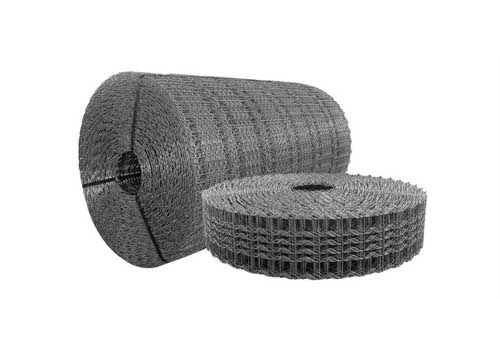- Industrial zone, South of Anping Town, Hengshui, Hebei, China.
- sales@hfpetromesh.com
- +86-18931809706
 Afrikaans
Afrikaans  Albanian
Albanian  Amharic
Amharic  Arabic
Arabic  Armenian
Armenian  Azerbaijani
Azerbaijani  Basque
Basque  Belarusian
Belarusian  Bengali
Bengali  Bosnian
Bosnian  Bulgarian
Bulgarian  Catalan
Catalan  Cebuano
Cebuano  Corsican
Corsican  Croatian
Croatian  Czech
Czech  Danish
Danish  Dutch
Dutch  English
English  Esperanto
Esperanto  Estonian
Estonian  Finnish
Finnish  French
French  Frisian
Frisian  Galician
Galician  Georgian
Georgian  German
German  Greek
Greek  Gujarati
Gujarati  Haitian Creole
Haitian Creole  hausa
hausa  hawaiian
hawaiian  Hebrew
Hebrew  Hindi
Hindi  Miao
Miao  Hungarian
Hungarian  Icelandic
Icelandic  igbo
igbo  Indonesian
Indonesian  irish
irish  Italian
Italian  Japanese
Japanese  Javanese
Javanese  Kannada
Kannada  kazakh
kazakh  Khmer
Khmer  Rwandese
Rwandese  Korean
Korean  Kurdish
Kurdish  Kyrgyz
Kyrgyz  Lao
Lao  Latin
Latin  Latvian
Latvian  Lithuanian
Lithuanian  Luxembourgish
Luxembourgish  Macedonian
Macedonian  Malgashi
Malgashi  Malay
Malay  Malayalam
Malayalam  Maltese
Maltese  Maori
Maori  Marathi
Marathi  Mongolian
Mongolian  Myanmar
Myanmar  Nepali
Nepali  Norwegian
Norwegian  Norwegian
Norwegian  Occitan
Occitan  Pashto
Pashto  Persian
Persian  Polish
Polish  Portuguese
Portuguese  Punjabi
Punjabi  Romanian
Romanian  Russian
Russian  Samoan
Samoan  Scottish Gaelic
Scottish Gaelic  Serbian
Serbian  Sesotho
Sesotho  Shona
Shona  Sindhi
Sindhi  Sinhala
Sinhala  Slovak
Slovak  Slovenian
Slovenian  Somali
Somali  Spanish
Spanish  Sundanese
Sundanese  Swahili
Swahili  Swedish
Swedish  Tagalog
Tagalog  Tajik
Tajik  Tamil
Tamil  Tatar
Tatar  Telugu
Telugu  Thai
Thai  Turkish
Turkish  Turkmen
Turkmen  Ukrainian
Ukrainian  Urdu
Urdu  Uighur
Uighur  Uzbek
Uzbek  Vietnamese
Vietnamese  Welsh
Welsh  Bantu
Bantu  Yiddish
Yiddish  Yoruba
Yoruba  Zulu
Zulu
- Afrikaans
- Albanian
- Amharic
- Arabic
- Armenian
- Azerbaijani
- Basque
- Belarusian
- Bengali
- Bosnian
- Bulgarian
- Catalan
- Cebuano
- Corsican
- Croatian
- Czech
- Danish
- Dutch
- English
- Esperanto
- Estonian
- Finnish
- French
- Frisian
- Galician
- Georgian
- German
- Greek
- Gujarati
- Haitian Creole
- hausa
- hawaiian
- Hebrew
- Hindi
- Miao
- Hungarian
- Icelandic
- igbo
- Indonesian
- irish
- Italian
- Japanese
- Javanese
- Kannada
- kazakh
- Khmer
- Rwandese
- Korean
- Kurdish
- Kyrgyz
- Lao
- Latin
- Latvian
- Lithuanian
- Luxembourgish
- Macedonian
- Malgashi
- Malay
- Malayalam
- Maltese
- Maori
- Marathi
- Mongolian
- Myanmar
- Nepali
- Norwegian
- Norwegian
- Occitan
- Pashto
- Persian
- Polish
- Portuguese
- Punjabi
- Romanian
- Russian
- Samoan
- Scottish Gaelic
- Serbian
- Sesotho
- Shona
- Sindhi
- Sinhala
- Slovak
- Slovenian
- Somali
- Spanish
- Sundanese
- Swahili
- Swedish
- Tagalog
- Tajik
- Tamil
- Tatar
- Telugu
- Thai
- Turkish
- Turkmen
- Ukrainian
- Urdu
- Uighur
- Uzbek
- Vietnamese
- Welsh
- Bantu
- Yiddish
- Yoruba
- Zulu
chain link helipad perimeter safety netting
Chain Link Helipad Perimeter Safety Netting Enhancing Aviation Safety
The aviation industry has seen tremendous growth over the past few decades, necessitating heightened safety measures, especially in helipads. One crucial aspect of ensuring safety on and around helipads is the implementation of perimeter safety netting. Chain link safety netting has emerged as a reliable solution to mitigate risks associated with helicopter operations, enhancing the safety of both personnel and equipment.
Chain link fencing has long been a staple in various sectors for its durability and versatility. When adapted for use as perimeter safety netting around helipads, it serves multiple vital functions. The foremost purpose is to provide a physical barrier that prevents unauthorized access to the helipad area. This is particularly critical during helicopter landings and take-offs when the risk of injury is significantly heightened. By restricting access to only authorized personnel, the likelihood of accidents and injuries can be markedly reduced.
Furthermore, chain link perimeter netting acts as a visual deterrent. It helps delineate the boundaries of the helipad clearly, making it evident to general staff and bystanders that entering the area could be dangerous. This visual cue is essential in busy environments where personnel might inadvertently approach the landing zone, unaware of the hazards involved.
chain link helipad perimeter safety netting

In addition to enhancing safety for individuals, chain link netting also protects equipment from potential threats posed by high winds or debris during helicopter operations. The netting can effectively contain any loose materials that might otherwise get swept into the helipad area, potentially causing damage to aircraft or creating hazards during operations. This protective characteristic not only safeguards aircraft but also reduces maintenance costs associated with damage repair.
The installation of chain link perimeter safety netting is also relatively straightforward, making it an efficient choice for helipad infrastructure. Its lightweight yet robust design ensures it can withstand adverse environmental conditions while remaining easy to manage. This adaptability is crucial for establishing secure helipads in diverse geographical locations, from urban rooftops to remote field sites.
Moreover, chain link safety netting can be tailored to meet specific needs, including height adjustments to accommodate various helicopter sizes and operational requirements. Customization allows for flexibility in design while ensuring optimal safety standards.
In conclusion, chain link helipad perimeter safety netting significantly enhances safety in helicopter operations. By providing a reliable barrier, serving as a visual deterrent, and protecting equipment, it plays a vital role in reducing accidents and ensuring operational efficiency. As the aviation sector continues to grow, adopting measures like chain link safety netting will be essential in promoting a culture of safety and responsibility. As we move forward, the integration of such safety solutions will help mitigate risks and foster a safer environment for all involved in aviation activities.
-
Welded Steel Bar Grating: The Rugged Industrial Flooring Solution Built for Load and LongevityNewsJun.24,2025
-
Steel Walkway Grating: Reliable, Resilient, and Built for Every StepNewsJun.24,2025
-
Shale Shaker Screen for Sale: Optimize Drilling Efficiency with Precision Screening PowerNewsJun.24,2025
-
Shaker Screen for Sale: Elevate Your Drilling Efficiency with Durable Separation SolutionsNewsJun.24,2025
-
Press Locked Steel Grating: Industrial Strength with Precision Fit for Heavy-Duty ApplicationsNewsJun.24,2025
-
Perimeter Safety Netting: The Critical Safety Upgrade for Every HelipadNewsJun.24,2025